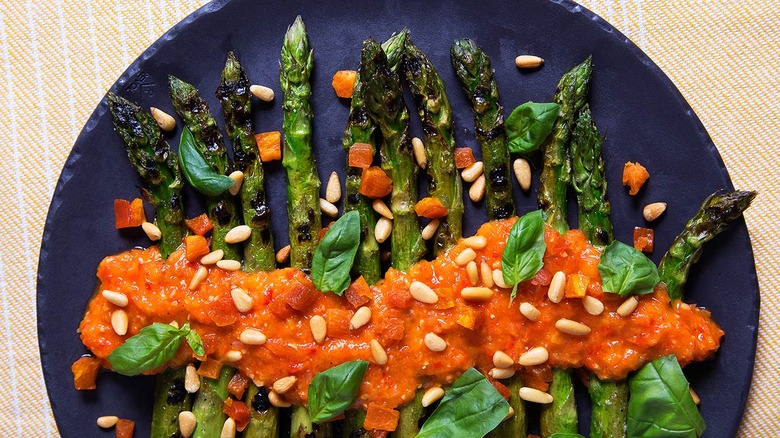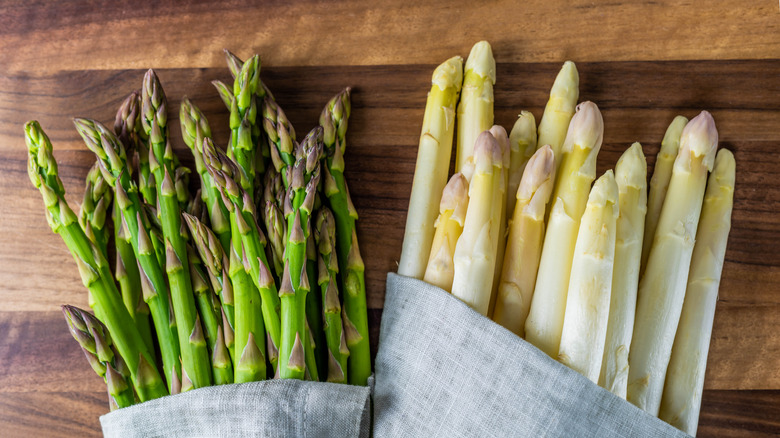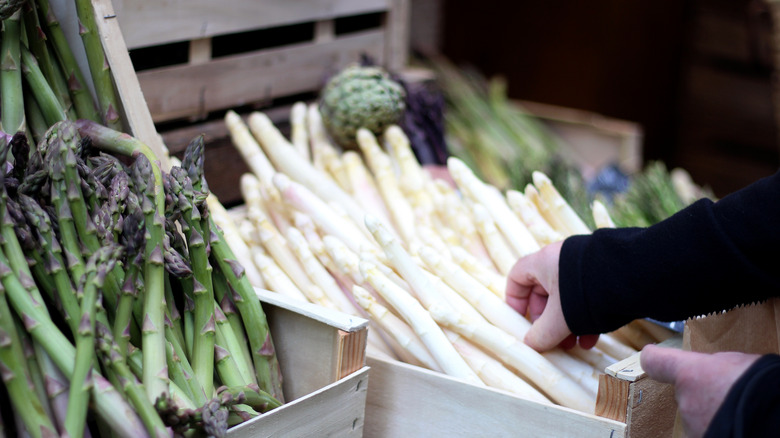What's The Difference Between Green And White Asparagus?
Asparagus is truly a blank canvas—it's delicious simply sautéed and served warm with olive oil, salt and pepper; marinated and tossed on the grill; quickly steamed and added to a bowl of pasta; or baked into a tasty spring quiche. But as versatile as it is, it's sometimes tough to know which variety — green or white—to use in each dish.
RELATED Blanch Asparagus like a Pro with This Simple Trick "
To help get you started, we've pulled together a guide to what these spears are all about. Grab a bunch from your local farmers' market or grocery store and get ready to start cooking.
How they're grown
The basic difference between green and white asparagus relates back to its roots — literally. While white asparagus is grown in a dark environment, either underground or well covered, the green version gets to soak up all the sunlight. Covering the white asparagus prevents it from producing chlorophyll, the naturally occurring chemical that turns the vegetable green. Both, however, are available in the spring.
How they taste
White and green asparagus also differ in taste. The white spears have a slightly milder flavor, whereas the green ones are a bit earthier and heartier.
How to prepare and cook them
Since white asparagus is generally thicker and coarser than its green counterpart, it's important to peel the stalks thoroughly and make sure they're well cooked. On the other hand, green asparagus is not as tough, but depending on the size — pencil, regular or large — you might need to trim off the ends and peel the stalks as well.
Unlike white asparagus, green should be cooked al dente until nice and tender. Thinner spears are best used for sautéing, stir-fries, pastas and savory tarts, while the thicker pieces are perfect for roasting and grilling. Given the differences in cooking time, both should be cooked separately.
The difference in cost
The price for each varies based on where the varieties are grown. So green asparagus, which is cultivated in the States, tends be less expensive in America than white, which grows mainly in Europe and South Africa. At the end of the day, the cost of importing the beloved vegetable affects the price tag the most.


